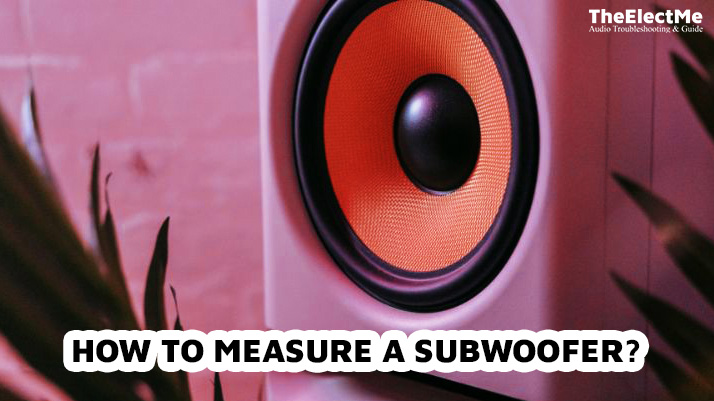Dreadnought, Parlor, and Classical guitars are different guitar bodies in the market today. Each type has unique features that make it special. Parlor guitars are smaller, making them more comfortable for players with smaller hands.
But did you know there are other guitar body types besides these three?

So, get ready to explore the fascinating variety of guitar bodies. It’s not just about looks; it’s about the music they help create. Let’s get started on this musical journey.
What Are The Different Types Of Guitar Bodies?
A wide range of guitar bodies are available, from the classic Dreadnought to the modern V-shaped guitars. Each type has its unique shape, size, and sound. Here are some of the most popular types of guitar bodies:
1. Dreadnought Guitars
The dreadnought guitar is a star in the world of acoustic guitars. C.F. Martin & Company, an American guitar manufacturer, is the brain behind this iconic design. The dreadnought style has inspired many other guitar makers since its inception.
It stands out with its more considerable body, wider lower about, and deeper body. This unique design gives the dreadnought a powerful sound and is more significant than most traditional acoustic guitars.
When you strum a dreadnought, you can feel its robust voice. It’s known for its low-end power, snappy midrange, and strong, clear treble notes. This makes dreadnoughts versatile.
There are many fantastic dreadnought guitars out there.
The Martin D-35 is one of the most iconic dreadnoughts ever made. It features solid rosewood that adds to its rich sound.
Orangewood also offers a wide range of dreadnought guitars, professionally set up in Los Angeles.
2. Parlor Guitars
Parlor guitars trace their roots back to the late 19th century. These compact guitars were a hit in small rooms or “parlors,” hence the name. They have a more petite body and shorter scale length than other types, making them easy to hold and play with. The design often features a narrower waist and an elongated body, giving it a distinctive look.
Despite their size, parlor guitars produce a surprisingly full sound. They are known for their bright and balanced tone with great clarity. The midrange shines through beautifully, making them ideal for fingerstyle playing and blues music.
Regarding parlor guitars, the Gretsch Jim Dandy Flat Top is a crowd favorite. It delivers a robust sound despite its petite size.

3. Jumbo Guitars
The jumbo guitar, first introduced by the Gibson company in the 1930s, is the largest of the acoustic guitar body types. It was designed to make the guitar louder and resonant, helping it compete with other instruments in extensive band settings.
The jumbo’s body is broad and deep, with a curved, rounded shape that stands out from other models.
Due to their large size, jumbo guitars deliver a powerful, rich sound with excellent projection. They offer a strong bass response and impressive volume, ideal for strumming and flat-picking styles. Despite their robust sound, jumbos maintain a balanced tone across bass, midrange, and treble frequencies.
Gibson’s SJ-200, known as the “King of the Flat-tops,” is one of the most famous jumbo guitars.
Its superior craftsmanship and distinct sound make it a favorite among many musicians.
Related: Bass Guitar Vs Electric Guitar
4. Auditorium and Grand Auditorium Guitars
Auditorium and Grand Auditorium guitars, often called 000 or OM models, were introduced in the early 20th century. They were designed to balance the smaller parlor guitars and the more giant dreadnoughts.
These guitars usually have a lower about like a dreadnought but with a narrower waist, making them comfortable to hold. These guitars are known for their balanced tone and volume across all six strings.
They produce clear, well-defined notes, perfect for fingerpicking and light strumming. The Grand Auditorium models provide bigger sizes for increased bass response and volume while maintaining a balanced sound.
The Martin 000-28 is one of the most well-known Auditorium guitars. It’s loved for its comfortable playability and balanced tone. For Grand Auditorium guitars, the Taylor 814ce is a standout model.
5. Classical Guitars
Classical guitars, also known as Spanish guitars, have a rich history that dates back to the 16th century. Antonio Torres Jurado standardized the modern classical guitar design in the 19th century. Their petite body and wide necks characterize them.
Classical guitars produce a warm, mellow tone softer than steel-string acoustics. Their rich resonance and overtones make them perfect for fingerstyle techniques in classical, flamenco, and folk music.
Let’s move to the tips for choosing the right guitar body.

Related: How To Record Bass Guitar?
How To Choose The Right Guitar Body Type?
Choosing the right guitar body type is critical to playing comfort and musical expression. Here are some factors you should consider when making your choice:
Sound
The body shape of a guitar significantly affects its sound. Dreadnoughts, with their larger bodies, typically produce louder, bass-heavy tones.
Smaller bodies like parlor guitars or grand auditoriums often yield a more balanced, intimate sound. Consider an orchestra model (OM) or grand auditorium for a versatile guitar that fits various music genres.
Comfort
Your physical comfort when playing the guitar is crucial. Smaller body types like parlor or concert guitars are more accessible to hold and play, especially for younger players or those with smaller frames.
On the other hand, more prominent guitars like dreadnoughts or jumbos may be more suitable for more famous individuals.
Style
The guitar body type should match the style of music you want to play. For instance, dreadnoughts are ideal for strumming and country music.
On the other hand, classical guitars with nylon strings are perfect for fingerpicking and classical music. If you’re into rock or blues, consider an electric guitar.
Conclusion – Types Of Guitar Bodies
To sum up, the types of guitar bodies offer unique characteristics and sound profiles suited for different playing styles. Parlor guitars are ideal for small spaces and fingerstyle playing. On the other hand, jumbo guitars provide a powerful sound for louder performances.
Auditorium and classical guitars offer balanced tones suitable for various music genres. Consider your comfort, preferred sound, and playing style when choosing the right guitar body type. Keep exploring to find the perfect fit for your musical journey.
So don’t hesitate to experiment and try different guitar body types to find the one that suits you best.



